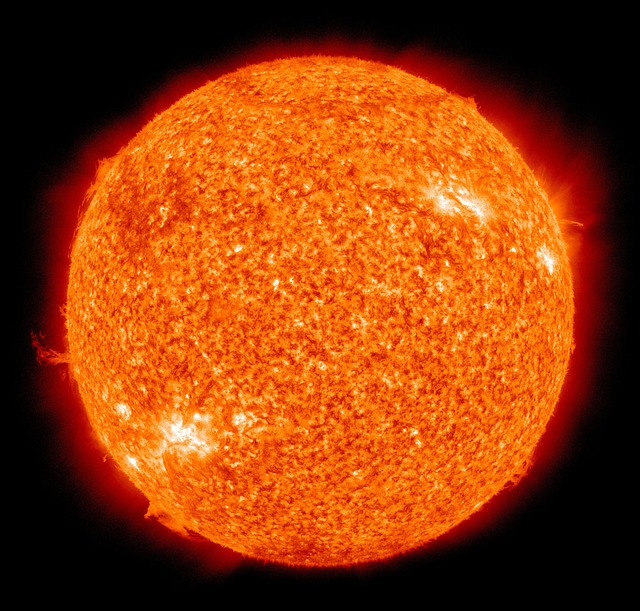Understanding Coronal Mass Ejections (CMEs)
Coronal Mass Ejections (CMEs) are colossal expulsions of plasma and magnetic fields from the Sun’s corona. These powerful solar phenomena occur when magnetic fields on the Sun’s surface become twisted and suddenly realign. The release of this energy propels billions of tons of solar material into space at speeds that can exceed several million miles per hour. When these CMEs are Earth-directed, they have the potential to trigger geomagnetic storms, leading to a variety of effects on our planet.
The Mechanics Behind CMEs
CMEs originate from regions of intense magnetic activity on the Sun, often associated with sunspots. These regions can produce solar flares, which are sudden bursts of radiation. When a flare is particularly strong, it can initiate a CME. The ejected material primarily consists of electrons, protons, and a smaller fraction of heavier ions, all embedded within a magnetic field. The size and speed of a CME can vary, but when they collide with Earth’s magnetosphere, they can cause disturbances that lead to geomagnetic storms.
The August 2024 Solar Events: A Triple Threat
Sequence of Solar Flares and CMEs
In August 2024, the Sun has been unusually active, producing a series of solar flares, including an X1.3-class flare, one of the most potent types. This flare, originating from the sunspot region AR3777, occurred on August 8, 2024, and was accompanied by a significant CME. This event followed two M-class flares from the same active region, each releasing their own CMEs. As a result, there are currently three distinct CMEs en route to Earth.
Speed and Impact of the CMEs
The CMEs released during these solar flares are moving at incredible speeds. The CME from the X1.3 flare, in particular, has been clocked at speeds exceeding 2.2 million mph (1,000 km/s). This rapid movement suggests that the CME could reach Earth within days of its release, potentially converging with the other two CMEs already on their way. This convergence could amplify the effects of the geomagnetic storm.
Geomagnetic Storms: Potential Consequences and Impacts
What Is a Geomagnetic Storm?
A geomagnetic storm occurs when the Earth’s magnetosphere—a protective bubble of magnetic fields surrounding our planet—is disturbed by solar wind or CMEs. These storms can range in intensity from minor to severe, with effects that can disrupt satellite operations, communication systems, and even power grids on Earth. The upcoming geomagnetic storm, forecasted to be a G2 (Moderate) storm, poses a real possibility for such disruptions.
Possible Outcomes of the Upcoming Storm
As the trio of CMEs collide with Earth’s magnetosphere, several outcomes are possible:
- Auroras: One of the most visually stunning effects of geomagnetic storms is the aurora borealis (Northern Lights) and aurora australis (Southern Lights). These natural light displays occur when charged particles from the Sun interact with Earth’s atmosphere, causing gases like oxygen and nitrogen to emit light. With the expected intensity of the upcoming storm, auroras could be visible much farther south than usual, potentially extending across the northern United States and parts of Europe.
- Communication Disruptions: The X1.3 flare has already caused shortwave radio blackouts across North America, including the Hawaiian Islands. Additional disturbances to radio communications and GPS signals are likely as the storm progresses.
- Power Grid Fluctuations: Geomagnetic storms induce electric currents in power lines, which can overload transformers and other critical infrastructure. While a G2 storm is moderate, it still poses a risk to power grids, particularly in regions with older or less robust systems.
Skywatching Opportunities: A Rare Double Spectacle
The Perfect Timing with the Perseid Meteor Shower
The CMEs’ arrival coincides with the peak of the Perseid meteor shower on August 11 and 12, 2024. The Perseids are one of the most popular annual meteor showers, known for their bright, fast meteors that can number up to 100 per hour at their peak. This year, the added possibility of widespread auroras makes for a rare opportunity to witness two celestial phenomena simultaneously.
Viewing Recommendations
For those hoping to catch a glimpse of the auroras, the key will be finding a location with clear, dark skies, away from city lights. The Northern U.S. states, from New York to Idaho, are likely candidates for viewing, depending on weather conditions. To enhance your experience:
- Check Local Weather Conditions: Cloud cover can obstruct your view, so it’s essential to monitor weather forecasts leading up to the event.
- Use NOAA’s Aurora Forecast Tools: NOAA provides a 30-minute aurora forecast model and an experimental Aurora Viewline tool to help determine the best times and locations for viewing.
Conclusion: Prepare for a Cosmic Show
The convergence of three CMEs with Earth, combined with the peak of the Perseid meteor shower, sets the stage for a potentially unforgettable weekend of skywatching. While the geomagnetic storm may cause some disruptions, it also offers a unique chance to witness the grandeur of our universe in action. Whether you’re an avid astronomer or a casual observer, this event is not to be missed.




